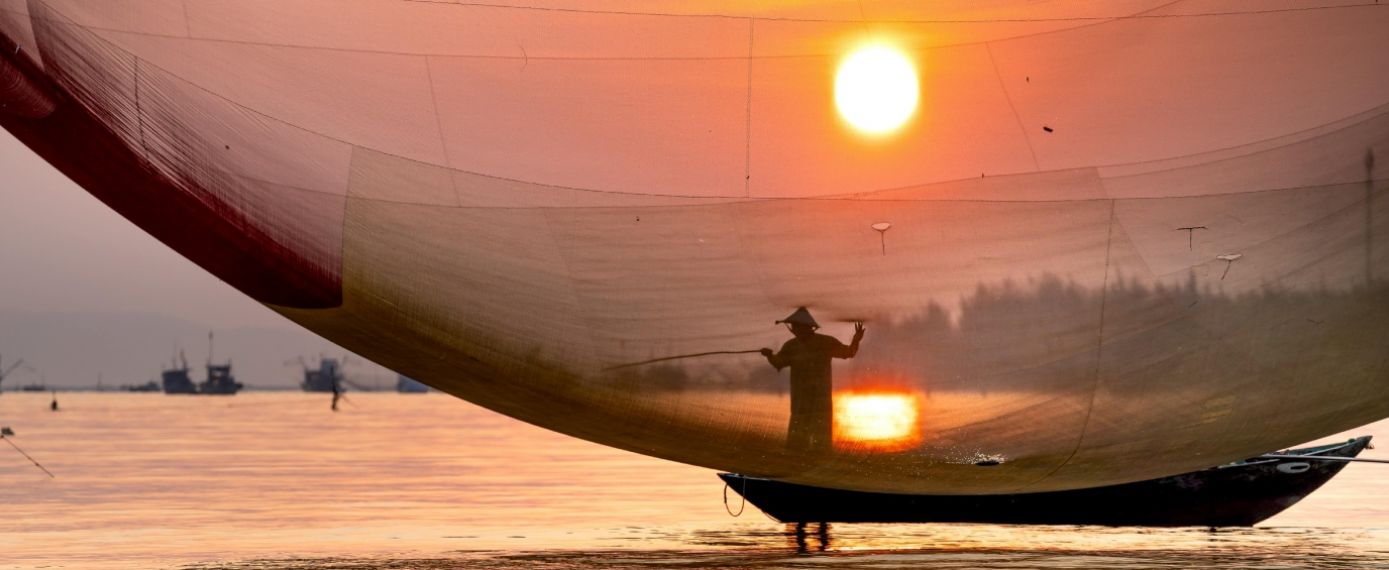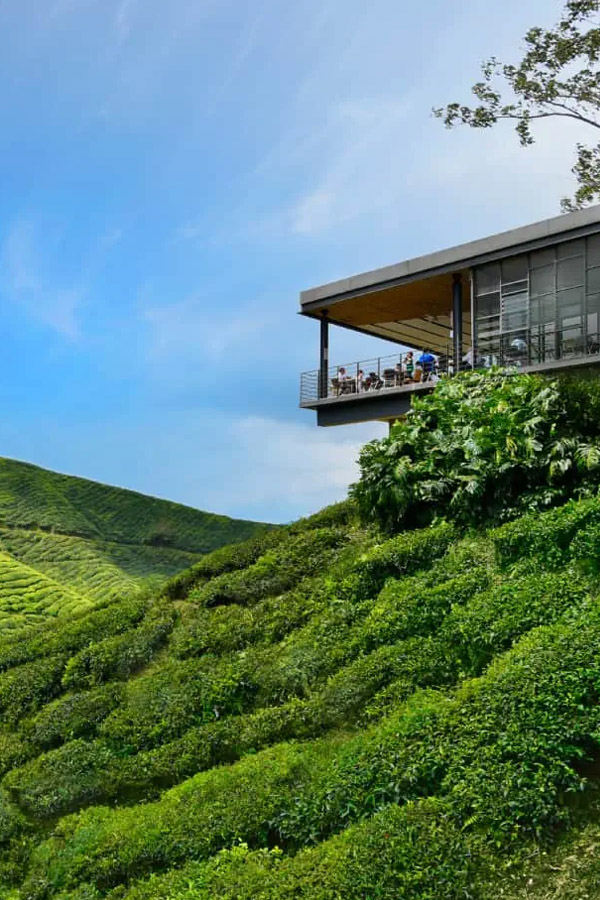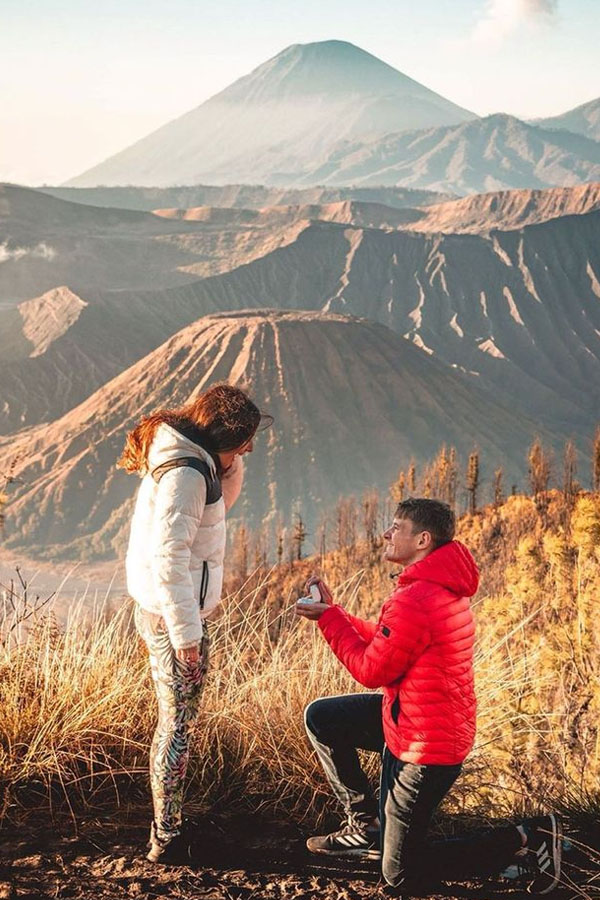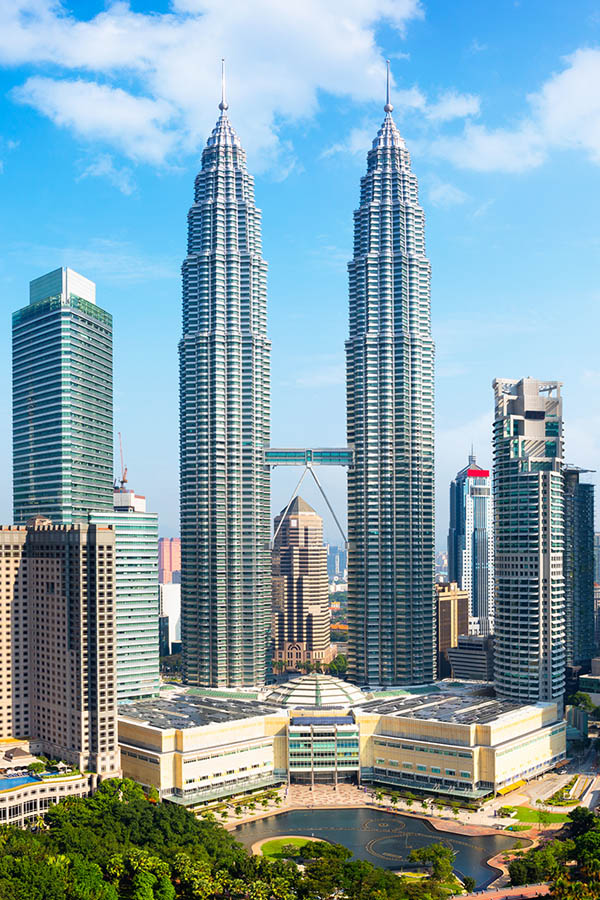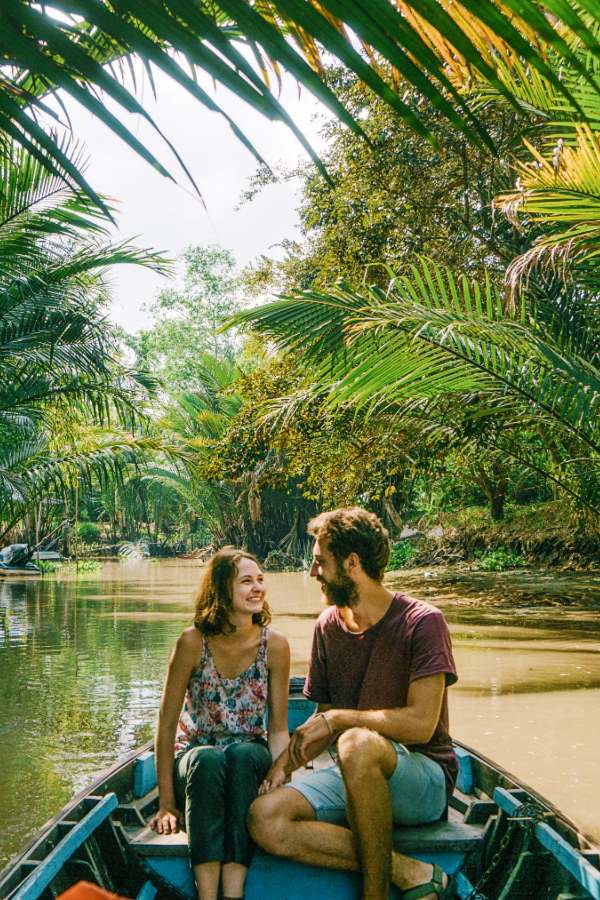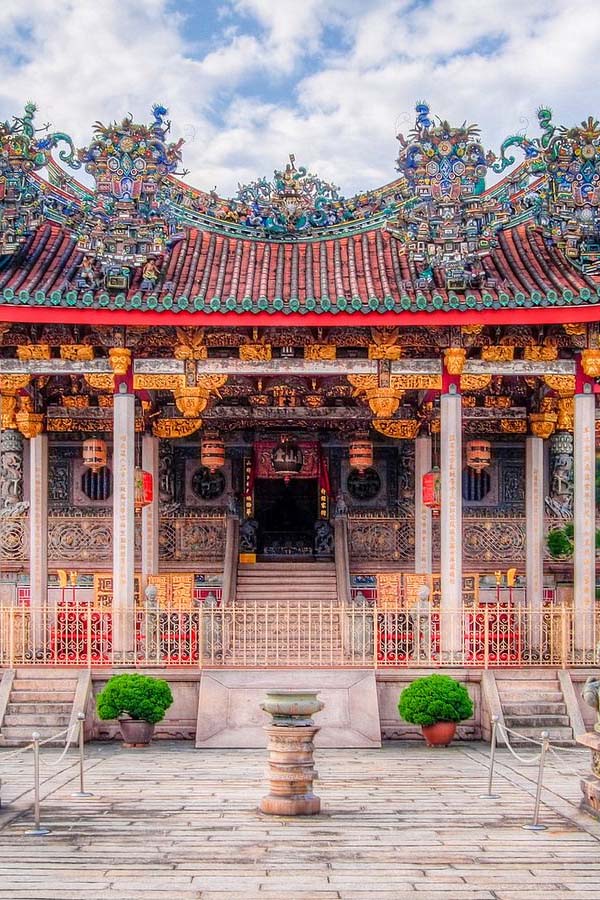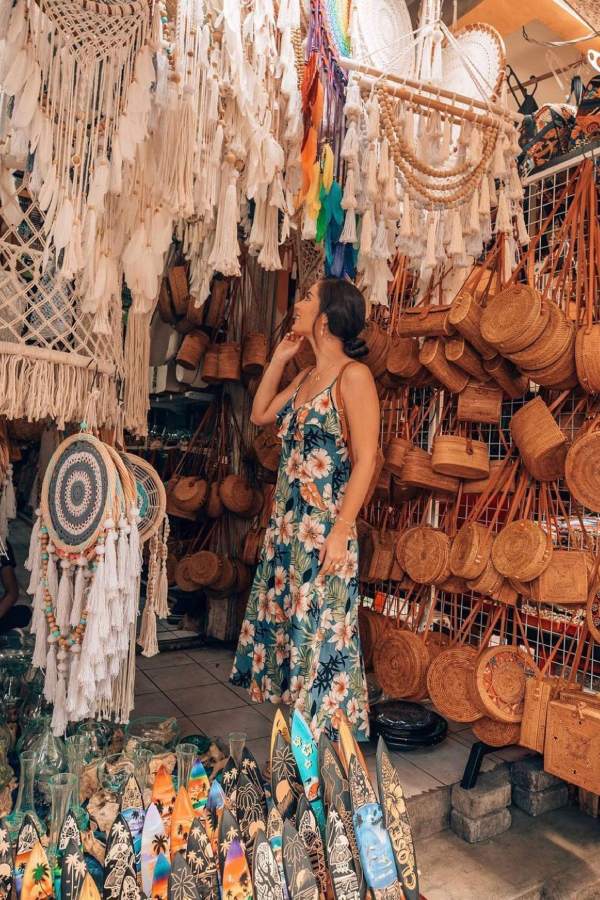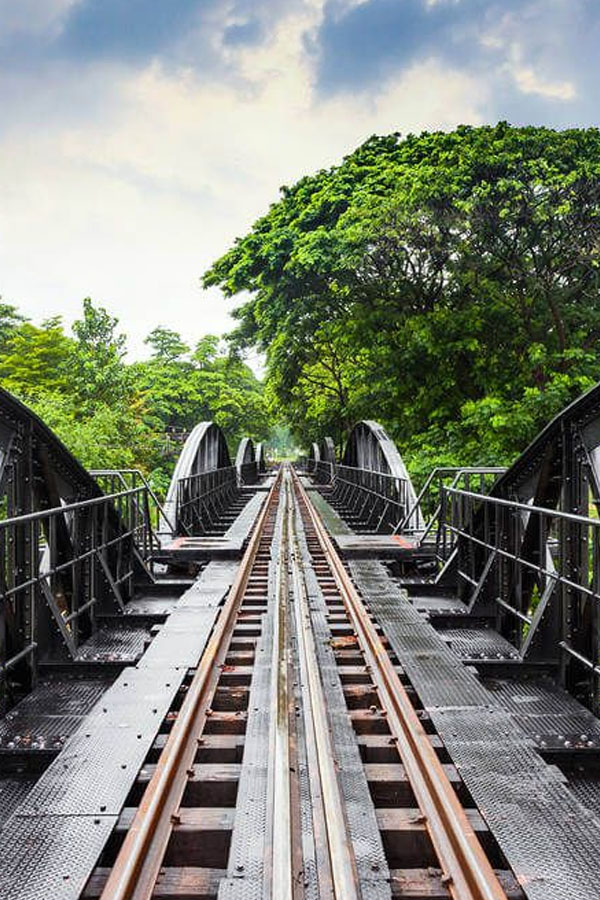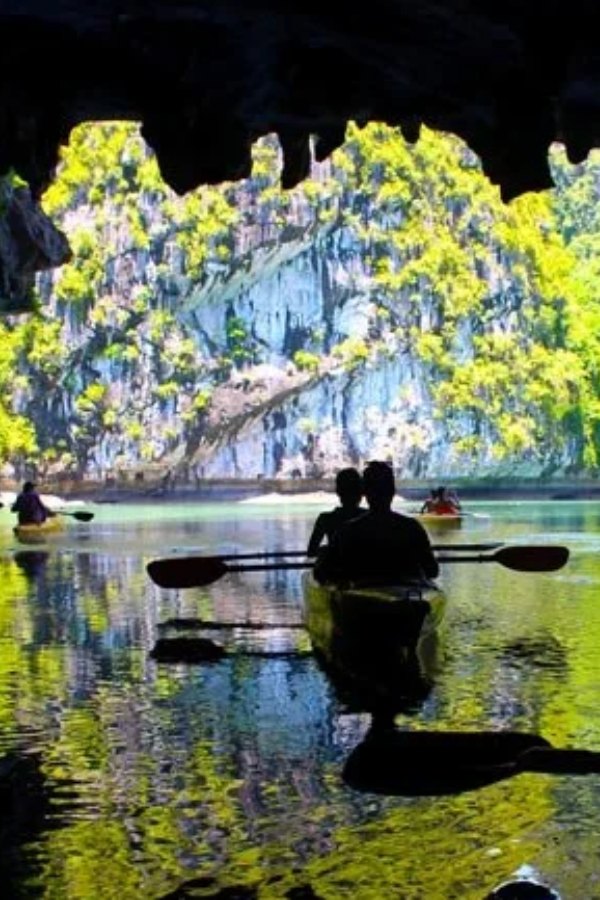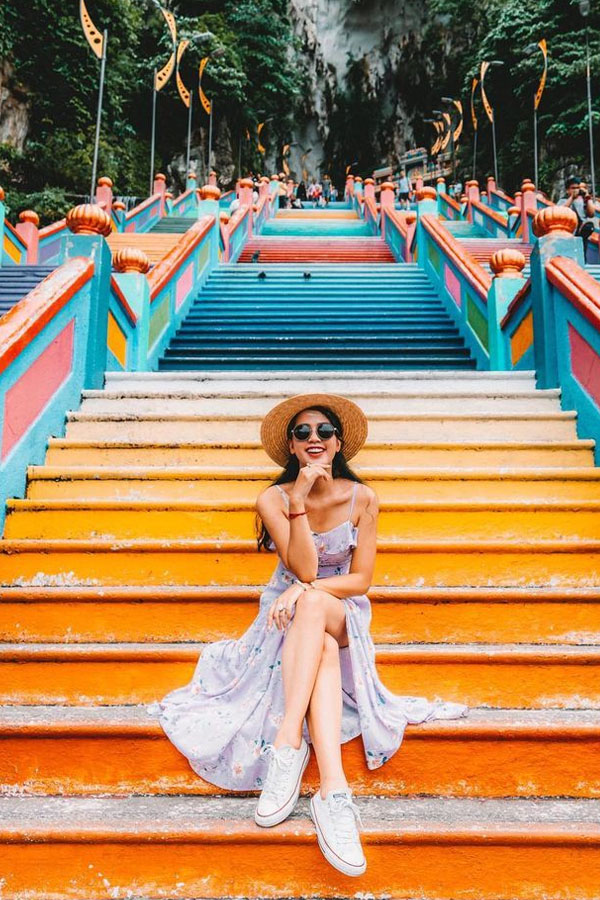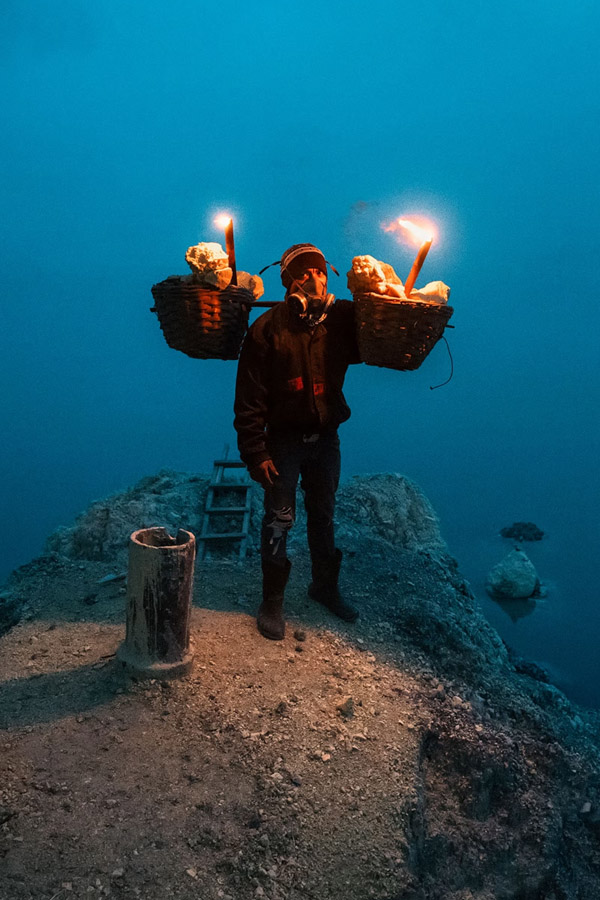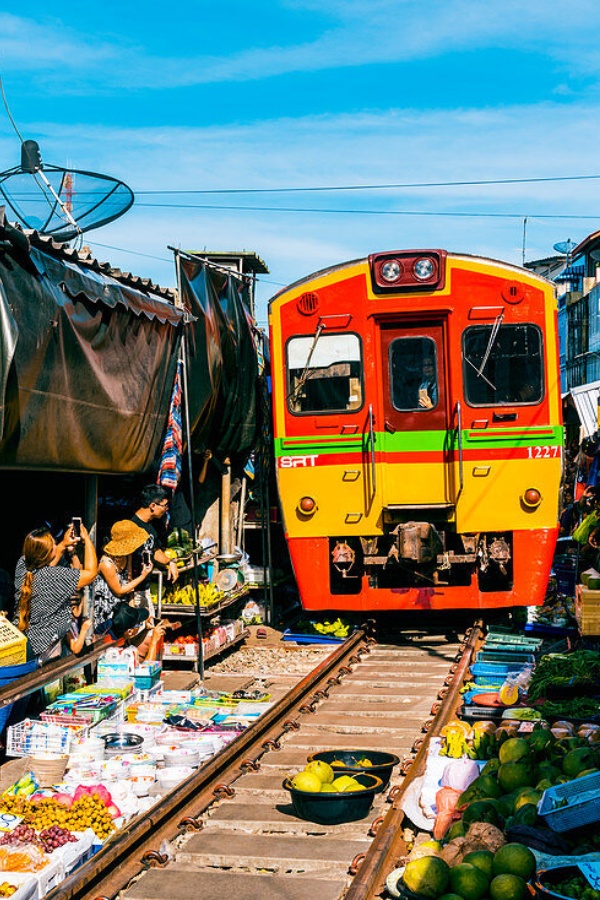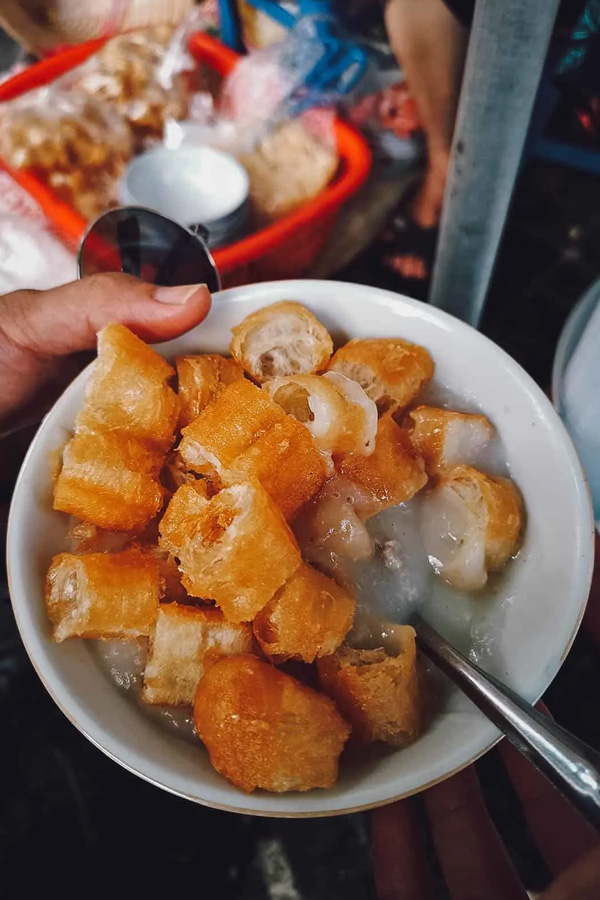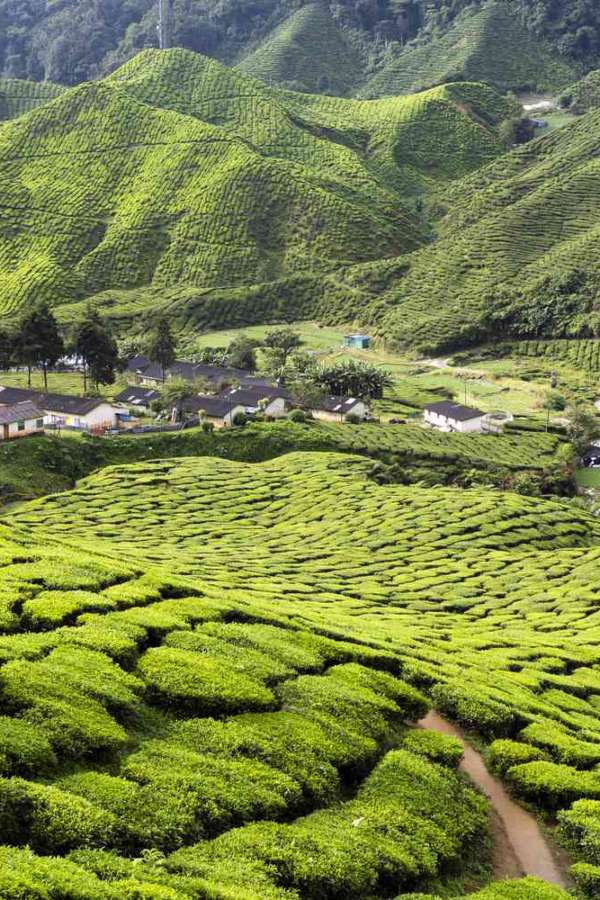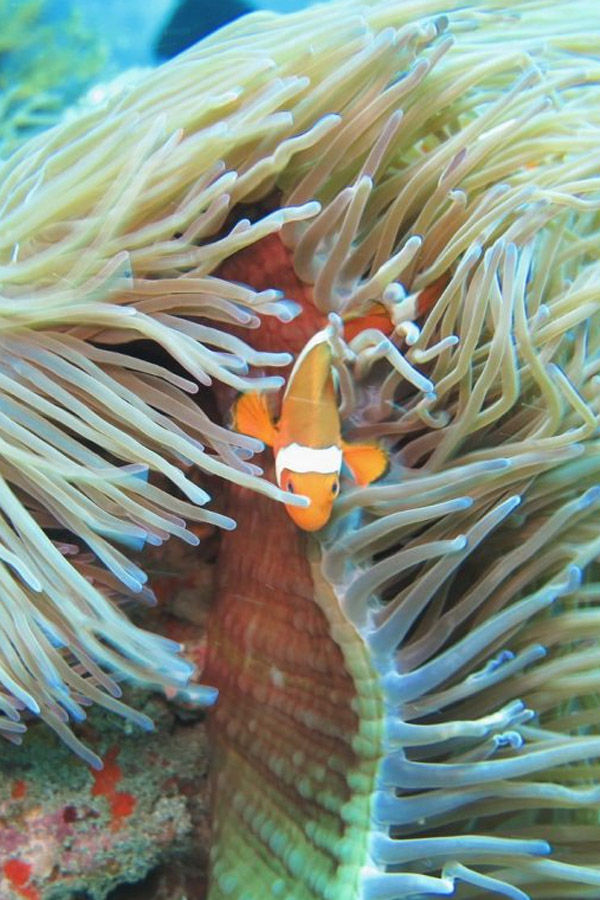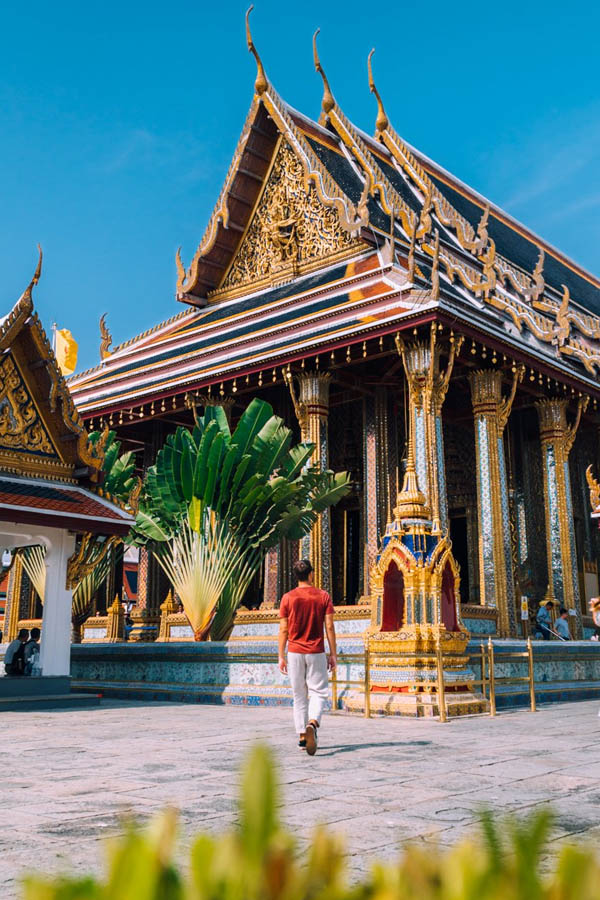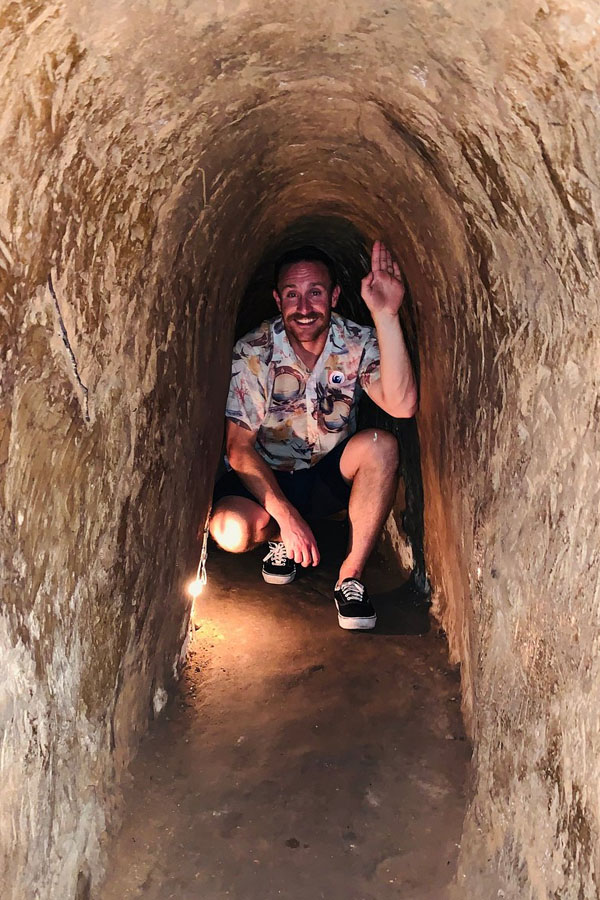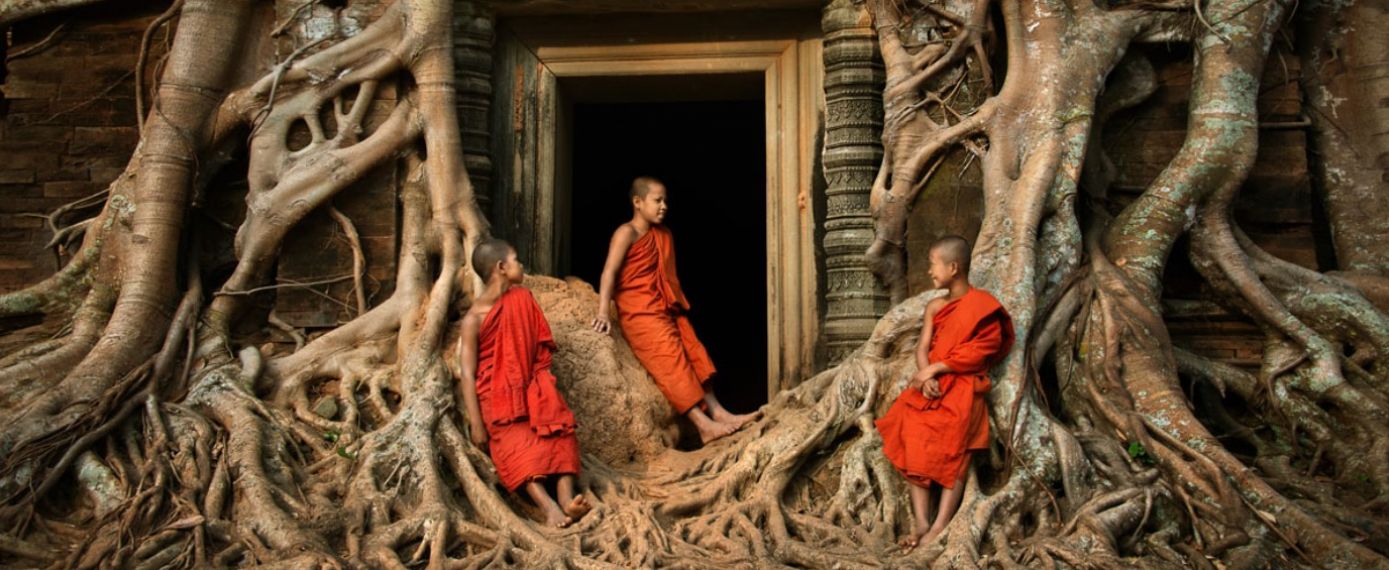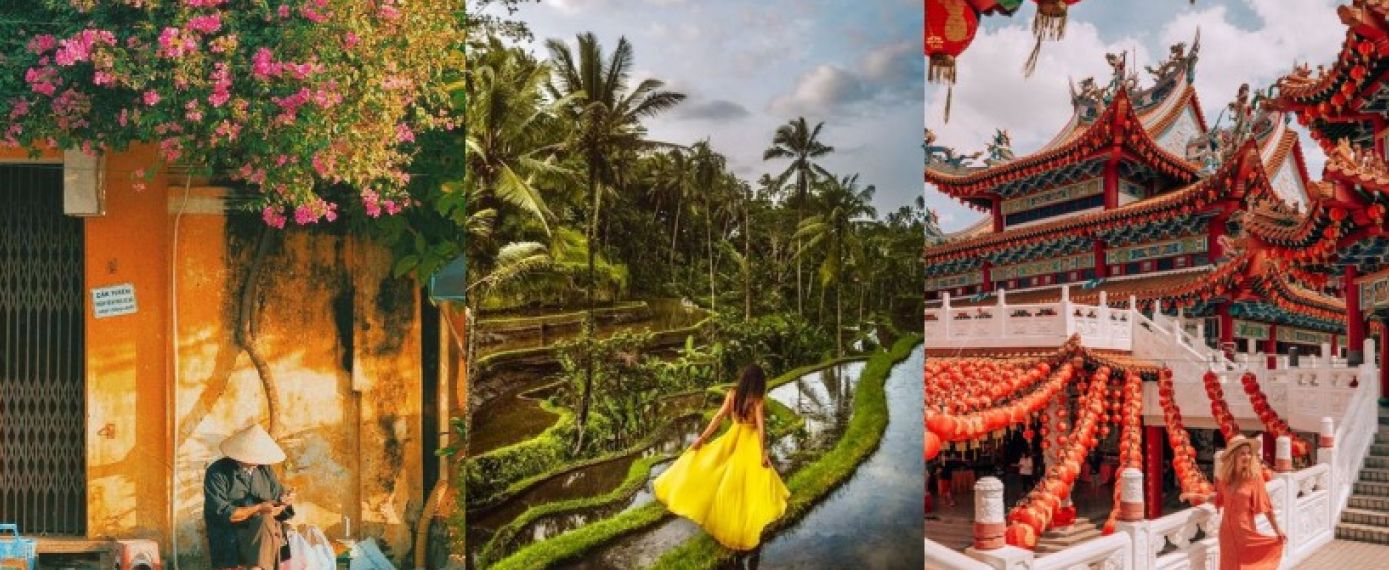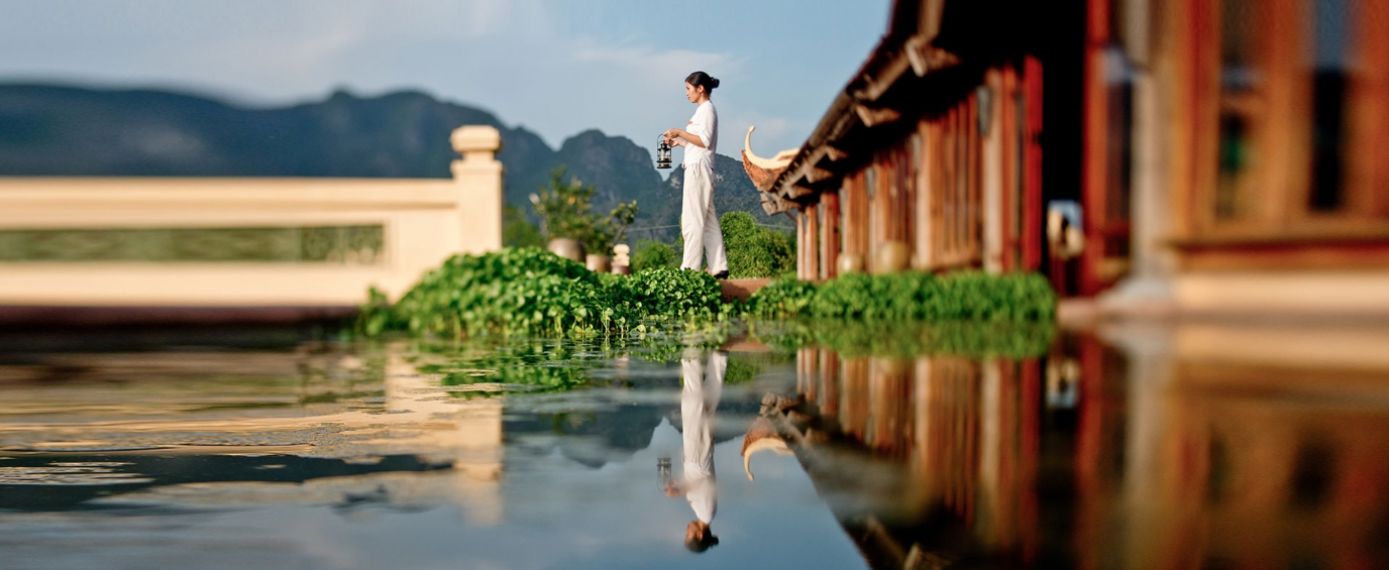
Welcome to Southeast Asia, the land of wonders and surprises! Let’s start your discovery of this wonderful region with our 4-week-long tour package. Start in the vibrant city of Kuala Lumpur; you’ll then indulge in the verdant greenery of the Cameron Highlands, witness an awe-inspiring sunrise over Mount Bromo, explore the ancient Thai capital in Ayutthaya, leisurely cruise the calm waters of Halong Bay, and yes, bask in the sun on the sandy beaches of Bali Island. Whatever you yearn for, this Southeast Asia trip will definitely be beyond your imagination.
Welcome to Southeast Asia, the land of wonders and surprises! Let’s start your discovery of this wonderful region with our 4-week-long tour package. Start in the vibrant city of Kuala Lumpur; you’ll then indulge in the verdant greenery of the Cameron Highlands, witness an awe-inspiring sunrise over Mount Bromo, explore the ancient Thai capital in Ayutthaya, leisurely cruise the calm waters of Halong Bay, and yes, bask in the sun on the sandy beaches of Bali Island. Whatever you yearn for, this Southeast Asia trip will definitely be beyond your imagination.
Highlights of this Tour
Our tour includes
Stay at
Hotel(26 nights), Cruise(1 night)
Read more...Transfers
Travel by private & shared vehicle with driver according to daily schedule
Read more...Local Team
Private guides, drivers, your own travel expert
Read more...Meals
Daily scheduled meals including breakfast at hotel and lunch at local restaurant
Read more...Activities
30 Interesting Experiences
Read more...Services
In-tour offerings including entrance fees, boat trips, in-tour flights...
Read more...Stay at
Hotel(26 nights), Cruise(1 night)
Read more...Transfers
Travel by private & shared vehicle with driver according to daily schedule
Read more...Local Team
Private guides, drivers, your own travel expert
Read more...Meals
Daily scheduled meals including breakfast at hotel and lunch at local restaurant
Read more...Activities
30 Interesting Experiences
Read more...Services
In-tour offerings including entrance fees, boat trips, in-tour flights...
Read more...Trip Overview
Malaysia Indonesia Thailand Vietnam Tour Package - 28 days

KualaLumpur
Cameron Highlands
Penang
Surabaya
Bromo
Banyuwangi
Bali Island
Bangkok
Kanchanaburi
Ayutthaya
Hanoi
Halong Bay
Ho Chi Minh
Mekong

With over 15 years of experience, our team will help you choose the perfect for your adventure.

Authentic

Flexible

Persionalized

24/7 Support


Destinations of this tour
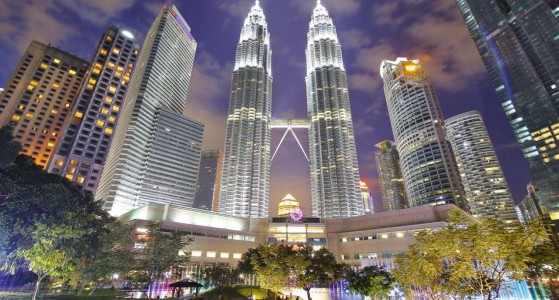
Kuala Lumpur is a diversity cultural melting pot, where jade-topped Chinese gates open out onto palm-lined squares, Indian restaurants serve banana leaf curries in marigold-scented alleyways, and old-fashioned Malay villages lie squeezed between the skyscrapers. Founded in 1857 under British rule as a tin mining outpost, Kuala Lumpur is fairly new as far as Malaysian cities go and does not have the rich history like Georgetown or Malacca. After a couple of decades of fluctuation, Kuala Lumpur began to prosper and was made capital of the Federated Malay States in 1896. Today, Kuala Lumpur is the capital of one of the economic powerhouses of Asia. Kuala Lumpurites come in all sorts. Malaysian and Chinese make up 80 percent of the population, and about 7 percent are Indians. Among the rest are offspring of intermarriages between races. Most Kuala Lumpurites speak at least two languages, one of which is Malay, or Bahasa Malaysia, the national language; some speak up to five – including Chinese and Indian dialects.
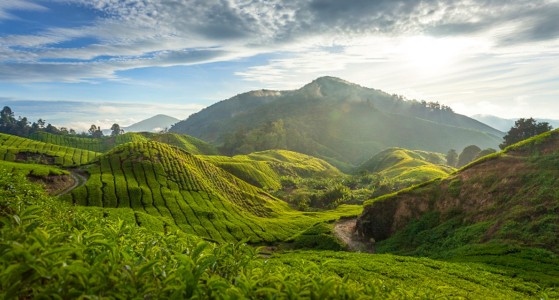
Cameron Highlands is a gorgeous hill station situated in Pahang, Peninsular Malaysia. The area is named after William Cameron, a British government surveyor who discovered the area in 1885 during a mapping expedition. During the colonial occupation era, Cameron Highlands gained fame due to its cool climate, attracting the British for a perfect summer retreat. Consequently, this hill station retains a quintessentially old English atmosphere with mock Tudor hotels serving tea in the afternoon and gin and tonics in the evenings. Cameron Highlands is well known for interesting hiking trails that are well kept, making things very easy experts and beginners alike. One of the most popular is the mystical Mossy Forest, the oldest forest in the area. It is known for the convoluted trees covered in moss that gives it an enchanted forest look. The paths have been mostly covered by wooden bridges making it quite an easy trek. For adventure lovers, there is a network of jungle trails taking in most of the major attractions and when combined with the roads will allow you to walk through most of the best areas from town to town. Most of the trails start, end, or can be combined with other trails to bring you to and from Tanah Rata. Cameron Highlands is also home to numerous agricultural farms where visitors can obtain fresher-than-fresh produce. One can visit a sweet-smelling strawberry plantation, a sprawling tea estate, or a prickly cactus farm for sightseeing.
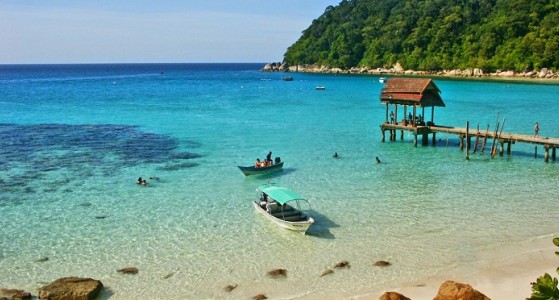
Penang is a state on the west coast of Peninsular Malaysia. Geographically, the state consists of Penang Island, and Seberang Perai, the mainland strip facing the island, which are separated by a small stretch of the Strait of Malacca. Penang is rich in culture and history, with a unique mix of Malay, Chinese, Indian and British influences. Visitors will find Penang brimming with charming historic buildings, ornate religious sites, sandy beaches, kampungs surrounded by rice paddies, vast unbeaten jungles, all topped with a splash of bustling city life. The unique way in which cultures have melded in Penang may be best represented in the food. Frequently voted among Asia’s top locations to eat street food, the blend of Malay, Chinese, Indian and European culinary traditions makes for an unforgettable banquet of taste sensations. Once was a British colonial holding, Penang has an abundance of classical Victorian architecture, particularly in the capital city, Georgetown. History buffs and architecture lovers in particular will appreciate the colonial-era Penang City Hall, Fort Cornwallis and the Penang State Museum. Part of Penang’s charm is that within minutes of admiring colonial architecture you can be wandering among the colorful statues of the Burmese Buddhist Temple or admiring the peaceful geometric patterns of the Kapitan Keling Mosque. Don’t miss the superb Pinang Peranakan Mansion, where the opulent lifestyle enjoyed by the wealthy Chinese Straits families has been recreated with antique furnishings from all over the world. If you enjoy getting back to nature, take a hike in the Penang National Park. Visit the nearby Penang Butterfly Farm for a colorful adventure the entire family will enjoy. And don’t miss the tropical spice garden, one of Malaysia’s premier eco-tourism attractions with more 100 herbs and spices growing wild.

Surabaya, located in the East of Java Island, is the second-biggest city of the nation. With more than 3 million people living inside its borders and over 10 million in the Surabaya metropolitan region, the city is home to Indonesia's second-largest metropolitan area. Situated on the Madura Strait in northeastern Java, it is among the oldest port cities in Southeast Asia. Along with Jakarta, Medan, and Makassar, Surabaya is one of Indonesia's four major center cities, according to the National Development Planning Agency.
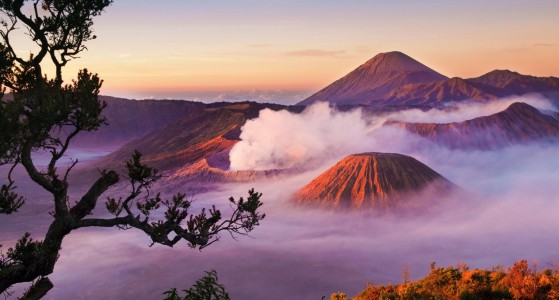
Mount Bromo (Indonesian: Gunung Bromo) is an active volcano situated in the eastern part of Java Island. At 2,329 meters (7,641 feet), it is not the tallest peak in the Tengger massif, but it is the most famous. The massif is one of the most popular tourist destinations in East Java, Indonesia. The volcano is part of the Bromo Tengger Semeru National Park. The name Bromo is taken from the Javanese pronunciation of Brahma, the Hindu creator god. Mount Bromo is located in the center of the 'Sea of Sand' (Javanese: Segara Wedi or Indonesian: Lautan Pasir), which has been a protected natural reserve since 1919.The classic route to Mount Bromo is from the adjacent mountain village of Cemoro Lawang. From there, it takes around 45 minutes to walk to the volcano, but you may also join an organized jeep tour that includes a stop at the Mount Penanjakan viewpoint (2,770 m or 9,088 ft) (Indonesian: Gunung Penanjakan). The viewpoint on Mount Penanjakan may also be reached by foot in about two hours.
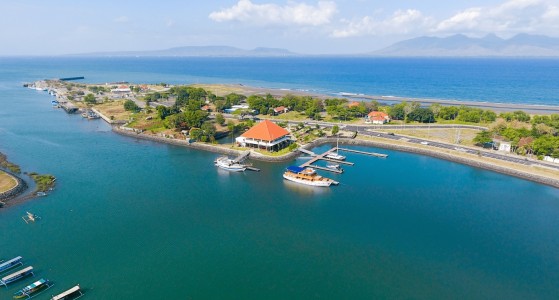
Banyuwangi is a city located on the easternmost tip of Java Island, well known for its ferry link from Ketapang to Gilimanuk in Bali. This location has a lot more to offer, and it is becoming more well-known as a visiting destination in and of itself. Banyuwangi is also the major entry point for the Baluran National Park and the Ijen Plateau, world-class surfing at G-Land (Grajagan), and the distant Alas Purwo National Park.
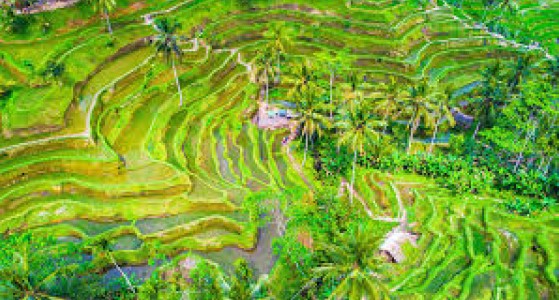
Ubud is a town located in the central part of Bali island, known for its rich arts and culture, as well as its lush landscapes of rice fields and tropical jungle, offering a contrast to the southern beach areas.
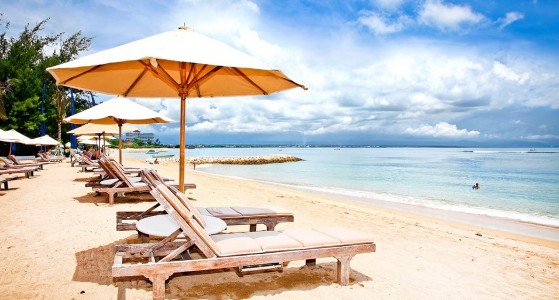
Southeast of Bali sits the seaside town of Sanur. Shallow waters can be found on its extensive beach. With a paved bike path behind them, vibrant jukung fishing boats are laid out on the sand. The 10th-century inscriptions in the coral-built Pura Blanjong temple date back to that time. Restaurants and art galleries line Jalan Danau Tamblingan, the lush main boulevard.
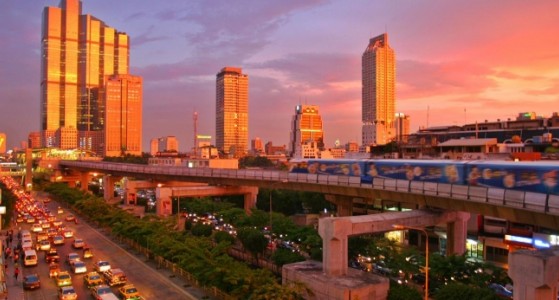
Buzzing, humid and energetic, Bangkok is the city where magnificent temples, historic markets, skyscrapers and rooftop bars create an intoxicating vibe that's hard to resist. The city is a mesmerizing blend of old and new, East and West, and dizzying contradictions. Historical sites next to vibrant nightlife areas, bustling markets near modern shopping malls, and street food vendors close to world-class restaurants. Hence, the city is still fascinating for its traditional culture. Saffron-robed monks weave among the morning rush hour to collect alms; communities dwell in stilt houses by the Chao Phraya River, eking out a living using centuries-old skills. A city tour in Bangkok often begins in Rattanakosin, drawn by the Grand Palace and Wat Pho. It's here the Chao Phraya River separates the city proper from its old capital Thonburi, a spot where quitet, narrow canals and floating markets illustrate why Bangkok was once called 'Venice of the East'. East of the canals is modern Bangkok, a hive of activity with countless businesses, markets and shopping malls handily connect by the BTS Skytrain. As a city that feels alive day and night, Bangkok is the destination for all, from foodies, shopaholics, culture seekers, history lovers, urban explorers, even party animals. That makes the well-known Southeast Asian gateway one of the world's most visited cities.
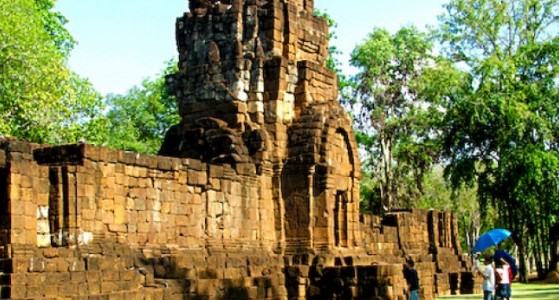
Kanchanaburi, located about 150 kilometers away from Bangkok, is a popular escape for those hoping to lose the crowd. This lush province and its pleasant capital is rich in rivers, waterfalls and outdoor adventure. It also occupies a tragic place in World War II history when Kanchanaburi region was the home of a Japanese prisoner-of-war camp. Popularized by the book and movie 'The Bridge on the River Kwai', the infamous bridge and railway is a notable part of the Kanchanaburi landscape. During World War II, Japanese forces used allied prisoners of war (POWs) and conscripted Asian laborers to build a rail route from Thailand to Burma (Myanmar). War cemeteries, museums and the chance to ride a section of the so-called 'Death Railway' draw numerous visitors to this quaint town. As a beautiful town with plethora of diverse attractions, Kanchanaburi is stacked full of great day-tripping opportunities. You can refresh yourself with a swim in one of the many sparkling pools at Erawan Falls; take a stroll down the city's heritage walking street for a look at the different Sino-Portuguese, Thai and Chinese building styles, or explore the famous temple caves built into the limestone hills surrounding Kanchanaburi.
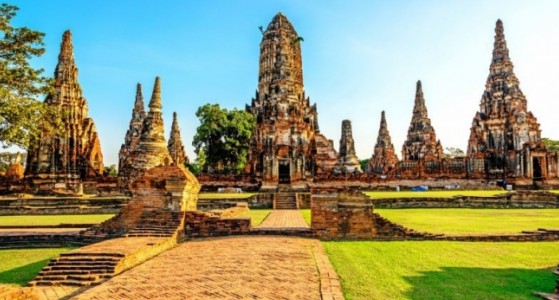
Ayutthaya, short for Phra Nakhon Si Ayutthaya, was once the capital of the ancient kingdom of Siam. It not only plays an important role in Thai's history but was also made a UNESCO World Heritage Site in 1991. Founded in 1350 and became the biggest city in the world by 1700, its wealth generated by trade with countries from all over Asia, the Middle East and Europe. However, it all came to an end in 1767 when war with Burma led to the devastation of the city. It was almost burnt to the ground and the capital of Siam moved to Bangkok. Nowaday, most of the ancient remains are on the western half of the island called the Ayutthaya Historical Park. There are temples, royal palaces, museums and more which are easy to explore on foot, by bike or tuk tuk. The most iconic sight of Ayutthaya resides in Wat Mahathat or the Temple of the Great Relic. Its signature is the tree root with a Buddha head embraced in it and no one knows exactly how it was made. Also worth a visit is the royal temple of Wat Phra Si Sanphet which was the original home of the Emerald Buddha, now located in the Grand Palace in Bangkok. Wat Phra Si Sanphet is the largest and one of the most famous temple in Ayutthaya which was once used for royal ceremonies and contained the ashes of royal family members. For an overview of Ayutthayan-style art, visit the Chao Sam Phraya National Museum, which holds well-preserved statues recovered from the ruins. There are beautiful bronze Buddhas dating from the 13th and 14th centuries, 17th- and 18th-century door panels with religious, traditional or floral carvings, and a hoard of 15th-century gold jewellery.
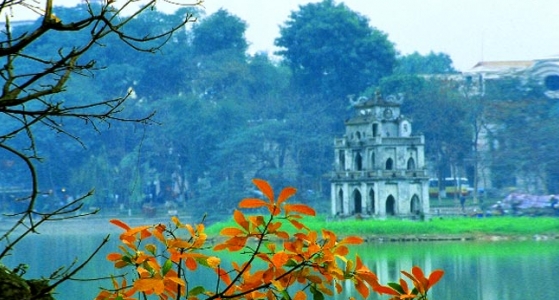
Perched on the banks of the Red River, Hanoi is Vietnam's capital and one of the world's most ancient cities. Its beauty lies in its liveliness of bustling streets where workshops and cafes spill out onto the streets and roadsides. As the intersection point where east meets west, Hanoi is a fascinating mix of old and new, Asian and European. With Chinese and French influences, an ancient culture, colonial architecture, broad tree-lined boulevards and beautiful lakes, the iconic architectural appearance of the Old Quarter and the elegance of the French Quarter, Ho Chi Minh’s Mausoleum and the Temple of Literature, etc... gives Vietnam’s capital city a unique charm of the ancient and modern. Hanoi is also home to one of Asia’s strong indigenous culinary traditions, with bustling wet markets and a rowdy street-food culture, as well as some five star international dining options. It is also very affordable by urban Asian standards, with the majority of hotels and restaurants offering plenty of value.
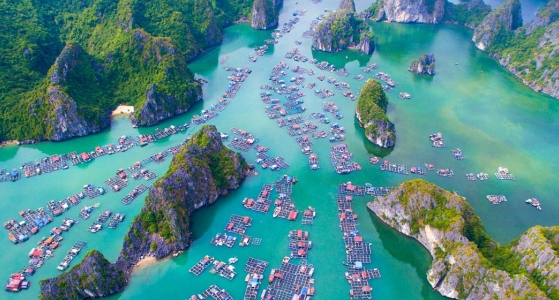
Halong Bay, listed as a UNESCO World Heritage Site in 1994, is located 170km east of Hanoi. It is made up of three neighboring bays: Halong, Lan Ha and Bai Tu Long bays, although Halong Bay is undeniably the most famous and most well-known of the three. Widely considered a natural wonder of the world, the UNESCO World Heritage Site is breathtaking with thousands of majestic limestone, peaks and islets rising dramatically out of the sparkling emerald waters of the bay. The most common way to explore is by taking an overnight night cruise or day-trip which cruises among the limestone pillars and islets. Many also include an island drop off and cave explorations. Visiting floating villages in the area gives a chance to interact with the local community whose livelihoods depend on the waters. Another way to immerse oneself close up in the bay is by kayaking near and around the limestone pillars and some of the caves that are possible to enter by kayak.
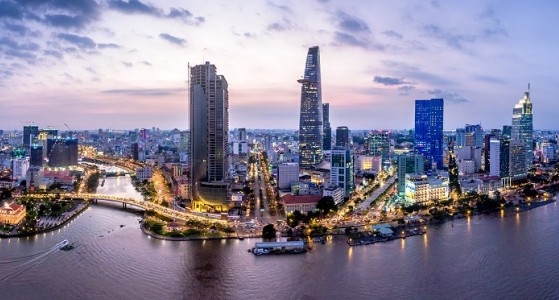
Commonly known as Saigon, Ho Chi Minh City in southern Vietnam is the country’s largest city and the financial and economical capital. This is a city full of surprises. Chaotic traffic blends with peaceful pagodas, parks, multi-style coffee shops and whole neighborhoods hidden down tiny alleyways. Icons of the past endure in the middle of the city’s vast urbanization. The ornate Saigon opera house, Hôtel de Ville - former French city hall, broad boulevards leading to the Saigon River and the gracious stucco villas are reminders of French-colonial times. In addition, the Chinese influence is also evident particularly in Cholon district (the city's Chinatown), while modern skyscrapers and international hotel chains that dot the skyline symbolize Vietnam's fixation on the future.
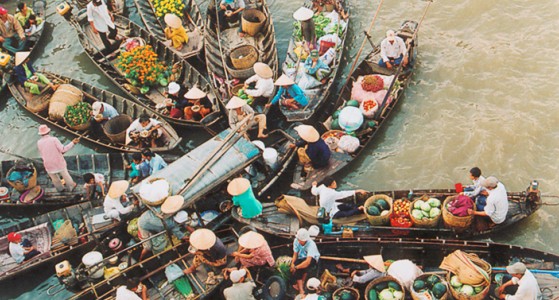
The Mekong Delta, located in the southernmost territory bordered by Cambodia, is the most fertile land in Vietnam. This is a region of unrelenting beauty - nicknamed the 'rice bowl' of Vietnam, where over 50% of Vietnam’s rice is grown. It is home to a unique ecosystem with diverse communities and ethnicities, and there are few places like this in the world. One the best, if not the best, ways to experience this area is to take a boat trip (1 day or a few days with staying overnight in local homestays) along the Mekong River's twisting capillaries of tropical canals, mangroves, past rice paddies, floating markets, where life on and off the river merge into one.
OTHER TOURS YOU MAY LIKE
When it comes to traveling to Southeast Asia, we can’t overlook the famous trio: Vietnam, Cambodia, and Thailand. This tour package will take you on a 20-day adventure across these three beautiful countries, revealing the charm of each destination. From Hanoi to Ho Chi Minh City, Siem Reap, and Bangkok, you’ll get the chance to learn about the gorgeous places, culture, history, and food. The final stop on our trip is Phuket, where nothing beats putting your toes into the white sand, sipping a glass of cocktail, and basking in the sun on one of Thailand's most stunning beaches. This 20-day Vietnam, Cambodia, and Thailand tour promises an amazing vacation of discovery and relaxation.
Only From $3360/person
All Inclusive ServiceThis Tour
See the best of the best Southeast Asia in this adventuring 19-day tour. Go through many sites of interest such as historic museums in Hanoi, the world-famous Angkor Wat complex, the vibrant Chao Phraya River, etc. Fall in love with this land while discovering deep down into the culture and natural beauty along the way you passing through. Get impressive views and feel the authentic peaceful rural life. Take the chance to meet local people and admire their hardworking characteristics and hospitability. Travel across many exciting and glorious lands to have a full diverse look and experience that you will never forget.
Only From $3040/person
All Inclusive ServiceThis Tour
Explore the calm allure of Siem Reap and behold the magnificent Angkor Wat in Cambodia. Venture into Malaysia's rich cultural diversity, from picturesque Penang to the vibrant Kuala Lumpur. Witness the awe-inspiring natural wonders of Indonesia, from the unique volcanic experiences in Bromo and Ijen to the fascinating island of Bali with gorgeous beaches and charming heritage. Conclude your amazing journey in Vietnam, with its authentic vibes of the Mekong Delta, bustling streets of Hanoi, and breathtaking scenery of Halong Bay. This 30-day comprehensive itinerary offers a perfect blend of relaxation, local discovery, and cultural immersion.
Only From $6150/person
All Inclusive ServiceThis Tour

Customize this tour with us!


Adventure Travel Trade Association


American Society of Travel Agents

Family Travel Association


TripAdvisor


The guardian


World Travel Awards
ABOUT US
Why Us Trusted Travel Company What Makes Us Different Meet Our Team Southeast Asia Travel Guide Southeast Asia Tour Highlights Pre-departures Deposit & Payment Cancellation Policy Terms and Conditions Contact UsOur Destinations
Vietnam Tours Cambodia Tours Thailand Tours Indonesia Tours Malaysia Tours Philippines Tours Laos Tours Singapore Tours Myanmar ToursMulti-country
Vietnam Cambodia Tours Vietnam Cambodia Laos Tours Vietnam Thailand Tours Vietnam Cambodia Thailand Tours Thailand Malaysia Tours Thailand Malaysia Indonesia Tours Indonesia Thailand Tours Indonesia Malaysia Vietnam Tours Southeast Asia Tours 26 - 30 Days Southeast Asia Tours 18 - 26 Days Southeast Asia Tours 12 - 18 DaysTravel Themes
Best Southeast Asia Tours Southeast Asia Heritage & Culture Tours Southeast Asia Nature & Wildlife Tours Southeast Asia Family Tours Southeast Asia Honeymoon Tours Southeast Asia Adventure & Outdoor Tours Southeast Asia Beach & Island Tours Southeast Asia Cruise Tours Southeast Asia Tours 8 - 12 Days Southeast Asia Tours < 8 DaysSOUTHEAST ASIA TRAVEL COMPANY LIMITED
As local Southeast Asia Tour experts with over 15 years of experience, Southeast Asia Travel company has built a solid reputation as experts in designing custom tours across Southeast Asia including Vietnam, Laos, Cambodia, Thailand, Singapore, Malaysia, Indonesia, Myanmar, Philippines... Every Southeast Asia tour we offer is exclusively private, ensuring flexibility to suit individual preferences.
Read more